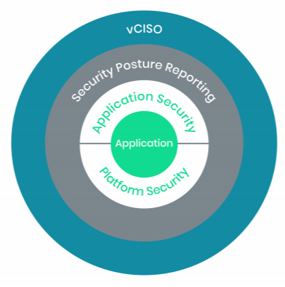7 steps to DevSecOps - building security into your DevOps pipeline
- By Blair CorbettWith increasing external threats and stricter privacy regulations, SaaS companies have been dealing with tougher scrutiny. Maintaining your reputation and customer’s trust, while scaling your product is essential.
Traditionally, security is an afterthought for developers, with most security checks being carried out in the final stages of development. By this point, the product is close to being fully developed, and security issues now pose a complex problem of time-consuming work.
The DevSecOps approach changes that. It brings an imperative shift-left and agile attitude that helps to catch potential issues early on, while they’re cheap and simple to resolve.
In this blog, we explain how you can implement a security focus throughout all stages of the DevOps pipeline and encourage a team-wide mindset shift.
The benefits of implementing DevSecOps practices at your SaaS organisation
The increased emphasis on security throughout the development pipeline will positively influence the overall security of the product. A product with security baked into its conception is a product that will sell itself.
Along with this, money will be saved due to early elimination of vulnerabilities, avoiding potentially devastating issues down the line.
The focus of security development being spread out over the entire DevOps pipeline means that security bottlenecks will be minimised, as there is no longer the need to wait for the development cycle to begin security checks. This will also be useful when ensuring your product is meeting industry-standard regulations.
The DevSecOps framework uses tools and processes to ensure security is built into applications rather than being added after.
Here are 7 best practices to secure the crucial processes in your DevOps pipeline:
1. Plan and conduct security services
Planning is a critical stage for implementing security throughout your DevOps processes. You need to be strategic and concise, with professionally developed acceptance criteria, user designs and threat models. Threat modelling can help to identify security vulnerabilities, determine risk, and ultimately mitigate threats.
2. Reduce the security risk when developing with third party components
Security implementations could include repositories for third-party modules and external dependencies, a process for regular code reviews and static code analysis tools.
Use Software Composition Analysis (SCA) and Governance so development teams can quickly track and analyze any open-source component brought into a project. When selecting third-party components (both commercial and open source), it’s important to understand the impact that a vulnerability in the component could have on the overall security of the system.
3. Inject security through proven tools and automation
Use carefully selected tools and intelligent automation in your dev team’s environment (such as an integrated development environment).
From our experience putting security controls into place for our clients, we’ve designed the Parallo Automation Library or PAL. It monitors Azure environments 24×7 to ensure optimised behaviour across security, performance, availability and cost. Automated corrective actions, waste detection processes, and other features abound.
Read more about our cloud platform management services here.
4. Perform regular testing and ensure continuous monitoring

When utilising continuous integration/continuous deployment (CI/CD) practices paired with monitoring tools, you will be able to gain better visibility into your application health and proactively identify and mitigate risks to reduce exposure to attacks.
Testing needs to be completed at all levels – both manually and through automated tools. Remember to not only test the application but the security measures and the overall environment.
Read about how to set a comprehensive security ecosystem into place for your company – complete with Application Security Testing, continuous auditing and posture reporting in Azure.
5. Define KPIs to set standards and maintain accountability
Define the minimum acceptable security standards early on and hold your engineering team to them. This includes thresholds for the severity of threats and resolution timeframes.
6. Use robust IaC tools and scan infrastructure deployments for vulnerabilities
Deployment is achieved through IaC (Infrastructure as Code) tools to automate and speed up the software delivery process.
Operations are to be involved in the testing and development activities as they will be building the environment. Maintaining periodic maintenance and utilising IaC tools to remove human error are both key considerations.
Azure Resource Manager offers a collection of management features, like access control, locks, and tags, to secure and organise your resources after deployment. More about securing the Azure Resource Manager here.
7. Encourage a team-wide mindset shift through training
A common myth associated with DevSecOps is that you require a new team of specialist developers. Rather if your developers are interested in shifting to DevSecOps, and you can train them, there is no need for hiring a new separate team. Training is critical to success.
Ensuring that everyone understands the attacker’s perspective, their goals, and how they exploit coding and configuration issues or architectural weaknesses will help capture the attention of everyone and raise the collective knowledge bar.
This retraining and repurposing of your teams lead to the issues of shifting mindsets and breaking away from tradition where the toughest challenge is one of culture.
Read more about our experience managing security for our SaaS customers here, or schedule a consultation with one of our security experts.